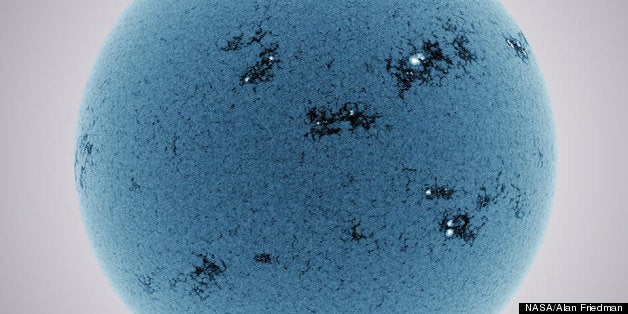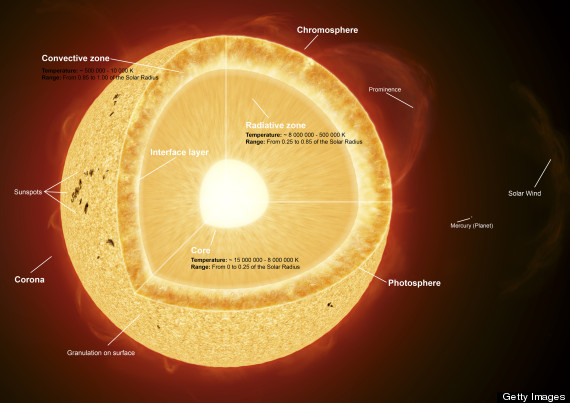
What if we had a blue sun? NASA's most recent "astronomy picture of the day" offers a false-color glimpse of our star in the cool hue, revealing a detailed look at the sun's chromosphere.
The chromosphere is the layer of the solar atmosphere about 250 miles to 1,300 miles above the sun's surface. It lies just above the photosphere and below the corona, as seen in the diagram below.
The chromosphere appears to have a reddish glow as super-heated hydrogen burns off, and the rim is sometimes visible during a total solar eclipse.
 Illustration showing the sun's various regions.
Illustration showing the sun's various regions.
Though the sun may appear yellow or reddish to the naked eye, it's actually an ordinary white star. And the blue version released by NASA was made using a specific wavelength of ultraviolet light known as CaK, which is emitted by ionized calcium in the sun's atmosphere.
"The sun is seething with activity in this first light view captured in the violet end of the visible spectrum," photographer Alan Friedman, who took the image, wrote on his "Journal of a Space Cowboy" Tumblr page. "I can see almost nothing visually at the CaK wavelength (my eyes are too poor in sensitivity) but the camera does not have this problem."
